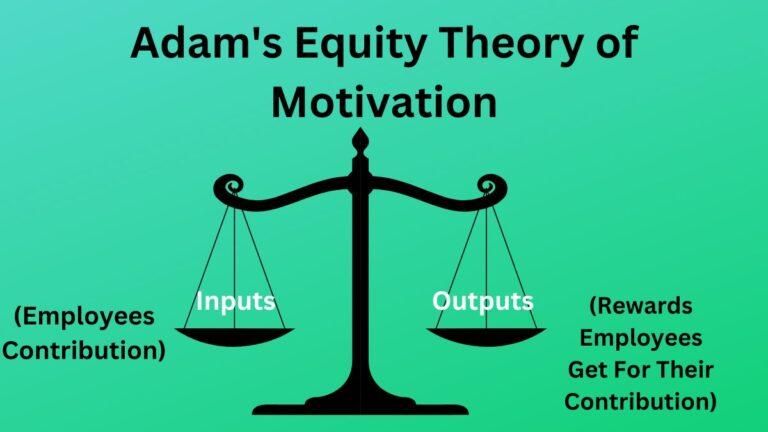18 Types of Plans Found In Organizations [Explained]
Types of Plan
Types of the plan (types of planning): Planning is the essential aspect of setting goals, managing resources, choosing courses of action, and ensuring the desired goal achievement. Plans are essential tools organizations use to attain the intended goals or objectives.
Depending upon the authority, purpose, situations, time, and nature there can be different of types plans in organizations. Usually, the types of plans can be categorized into five following bases:
- Based on the managerial hierarchy
- Based on the frequency of use
- Based on flexibility
- Based on the time horizon
- Contingency plan
Let’s understand these types of planning individually.
Types of Plans Based on Managerial Hierarchy
As there are three levels in the managerial hierarchy, the types of plans also include three. They are:
Corporate Plans
The highest level of plan is the corporate plan. It is also called a strategic plan. This plan involves designing the strategic framework for the organization.
Top-level managers set corporate plans – they prepare the overall vision, mission, goals, and strategies for the organization and express the future of the organization and how it intends to be there. Such plans give a clear answer to the question “How to achieve an organization’s ultimate goals?”.
Strategic plans are long-term plans usually prepared for more than five years. They determine the existence of firms. They are prepared by carefully analyzing the environmental factors like competitive threats and opportunities – strengths and weaknesses of the firm and determining how the firm effectively walks in such an environment.
Departmental Plans
Departmental plans also called tactical plans are prepared to achieve what’s outlined in corporate plans. Corporate plans are the basis of tactical plans, hence, tactical plans work being consistent with corporate plans.
Middle-level managers prepare tactical plans for the achievement of specific goals based on the nature and scope of specific departments. Usually, the corporate plans are broken down into departmental plans, and each department head is appointed and given the necessary power to ensure effective operations in respective departments.
The time span of tactical plans is less the three years. And, these plans are prepared on the basis of the strength and weaknesses of the particular division or department.
Operational Plans
Operational plans are day-to-day plans which are prepared by lower-level managers such as supervisors, team leaders, or unit heads. These plans are prepared for operations units to set their goals and specific units.
Related: Principles of Planning
Usually, the time frame of operational plans is less than one year and they are prepared for routine activities or for a short time. Such plans identify the specific procedures and processes required for the operational units of the organization.
And, all operational planning needs to be consistent with tactical and strategic plans.
Types of Plan Based on Frequency of Use
Some types of plans are used constantly for a long time while others may have short time use and few plans have only one time to use. On the basis of how frequently the plans can be used, can be categorized into two categories single-use plans and standing-use plans.
Single-Use Plan
Single-use plan, as its name suggests is a type of plan that is used only once. This plan is prepared for a specific purpose and the purpose has achieved the life of the plan ends. Meaning that it is a non-repetitive plan.
Single-use plans are suitable for non-programmed decisions. Usually, types or examples of single-use plans include two.
- Programs – Programs are plans designed to achieve specific objectives. For example, a company may organize a program to launch a new product, a college may organize a program to welcome its new students, etc. As it is part of the single-use plan once the particular objective is achieved the program also becomes of no use.
- Budget – Organizations often prepare different budgets to effectively meet goals outlined by plans. It includes forecasting future estimated expenditures for plans.
Standing-Use Plan
The opposite of single-use plans is standing-use plans. Such plans are used for a long time as well as repetitive uses like mission, strategy, and goals of the organization.
Related: Characteristics of Planning
Standing use plans are suitable for programmed decisions and routine functions. Once these plans are developed can be used in different situations to ensure the achievement of organizational goals. Following are some types of standing-use plans.
- Goals or Objectives – Goals or objectives are often interchangeably used. They are the desired outcomes firms want to achieve towards which organizational activities are directed.
- Strategy – Strategy is the long-term plan that outlines the ways of achieving organizational goals and arranges necessary resources to effectively attain such goals.
- Policies – Policies are general guidelines accepting which organizational members have to take actions and decisions in the workplace.
- Procedures – These are the methods through which the firm’s members have to perform the given tasks. It lays down necessary steps that display how to accomplish the given task.
- Rules – Rules are also a type of standing-use plan. Rules are the specific plans that state what the company’s members should do and what not. E.g. not smoking inside the workplace.
Types of Plan Based on Flexibility
Some types of plans can be modified according to time and situations while others can not easily be done. On the basis of the extent of flexibility i.e. provision of change, amendment, or modification, plans can be categorized into flexible and specific plans.
Flexible Plans
Flexible plans are ones that can be modified or adjusted according to the circumstances and the time. Flexible plans provide general guidelines for performing activities. They can not provide specific objectives and procedures.
It is adaptable to changing circumstances. Flexible plans are also known as directional plans. Such plans have no bearing on the organization’s long-term goals and ambitions.
Specific Plans
If the plans are more specific and can be used for a long time without any change, such plans are called specific plans. They are clearly defined and have long-term specific objectives.
There is no ambiguity and no chance for misinterpretation of such plans. Examples of specific plans include organizational vision, mission, long-term goals, etc.
Types of Plan, Based on Time Period
Plans are also prepared for various time periods. Some plans become useless after some time – usually, plans are prepared for a specific period. On the basis of time period plans are also classified into the following three categories.
Related: Methods of Planning
Long-Term Plans
These plans are prepared for a long time specifically for more than five years. Top-level members of the organization prepare such plans. They are basically prepared to attain organizational success. Organizational missions and strategies are examples of long-term plans.
Medium-Term Plans
Medium-term plans are prepared for intermediate terms, especially for two to four years. Such plans are departmental plans which are prepared by the middle-level managers of the organization.
Short-Term Plans
Short-term plans are prepared for less than one year. Programs and operational plans are short-term plans. They are prepared by their respective work units.
Contingency Plan
A contingency plan, also known as a situational plan, is a backup strategy created in the event that the primary course of action is unexpectedly interrupted or deemed inappropriate. A well-established plan may occasionally fail during implementation due to environmental uncertainties, in which case management must create a new plan to either replace it in an emergency or correct it.
Such a plan prepared in an emergency in seek of continuity to organizational activities is called the contingency plan. Thus, a contingency plan is nothing but being prepared by thinking in negative ways i.e. asking what to do if regular plans do not work.
Read Next: Planning Hierarchy
Sajan Kushmi is a content writer with more than 4 years of experience. He holds BIM Degree. He write on the topics related to Management, Marketing, and Entrepreneurship.






